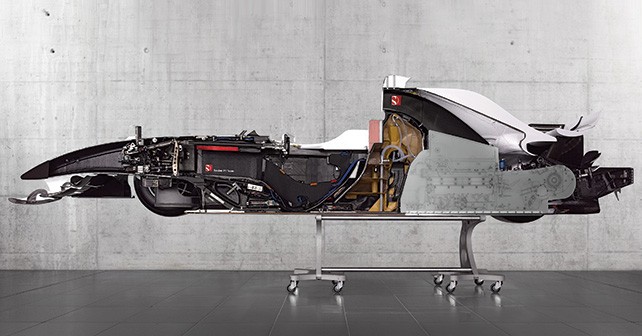
Joe doesn’t think that F1 needs to be dumbed down. He feels that technology is worth highlighting, and also that the sport should help carmakers sell more cars…
Formula 1 should be about technology. It’s what makes the sport different – and special. Some want to dumb it all down, and have everyone using the same equipment. Yes, that can save money, but it undermines the philosophy of Formula 1.
The sport is a balance between spectacle and technology, and shifting that towards becoming more of a show may be commercially more lucrative – but that doesn’t mean that it’s the right solution in the long term. Formula 1 was the successor of Grand Prix racing in the 1930s, and one can trace its roots back to 1906. At the time, the automobile manufacturers understood very clearly that racing was about two things – developing their products, and selling them! And this hasn’t really changed, apart from the fact that the sport cut itself off from automotive development for a few years, with frozen engines and rampant aerodynamics – the latter was irrelevant to the industry and very expensive. It was also the key to sporting success. Since the introduction of V6 turbo hybrid engines in 2014, aerodynamics have counted for much less. But engine technology is back where it should be – helping the companies involved in selling cars.
If one looks at the product lines of Mercedes and Ferrari, both are incorporating the latest technology into their road cars and intend to use more in the future. Energy recovery is important, to reduce the consumption and CO2 emissions of vehicles, and to meet the stringent standards that are coming. Renault is going through a period of angst, realising that it hasn’t been very successful in using its on-track success to its advantage. The success of the Vettel/Red Bull years was not used by the Renault marketing people. Nonetheless, it makes no sense to leave the sport given the huge investment that has been made in the new engines. Renault’s strategy is to sell premium cars in the stagnant European markets, while developing mass-market machinery in the developing markets of Brazil, China, India and Russia, where F1 is a useful marketing tool. If you’re trying to sell aspirational machines to the public, one needs to tap into the passion of the fans of the marque, which means that Renault should be concentrating on two things – making better F1 engines and finding some better marketing people.
Formula 1 itself needs to have a similar look at its own focus. Force India’s Bob Fernley recently made the valid point that F1 teams really ought to concentrate their aerodynamic research and development in the field of computational fluid dynamics (CFD), which is a virtual technique that does the same job as a wind tunnel. The logic behind this is that wind tunnels are old technology, and the car industry has more advanced facilities than those that are used in F1, which are primary elements in spending in the sport. It would be better to focus on CFD, because it needs to be developed more and the technology can be used in other industries. To a great extent, he is right. The first wind tunnels were developed in the 1870s – and while F1 has some high technology tunnels, they’re not simulating air temperatures, pressures and humidity. Fernley believes that the sport can aid the industry best if it concentrates its resources on things that need to be further developed. CFD has the potential to do much more than it does today, which would benefit the automobile industry and create the potential for more business opportunities. Inevitably, those with focus solely on sport want to hold on to the tools of their trade, but at a great deal less cost CFD can be made to do the same job. Fernley’s views may be deemed simplistic by some, but there’s an element of truth in what he’s saying. The automobile industry is constantly looking for better simulation, because it’s much more cost-effective and efficient than the physical testing of specially-built models and prototypes. It is also cleverer…
Joe Saward has been covering Formula 1 full-time for 27 years. He has not missed a race since 1988.























Write your Comment